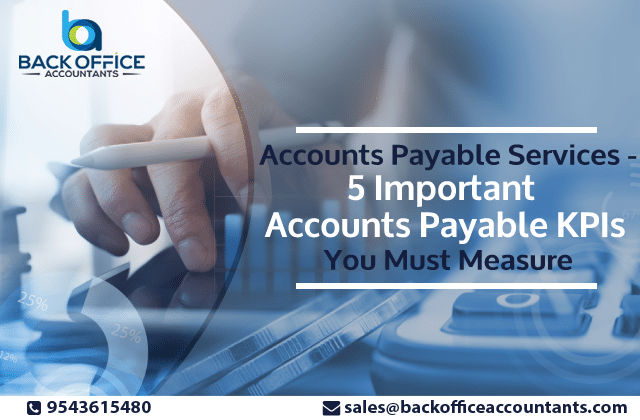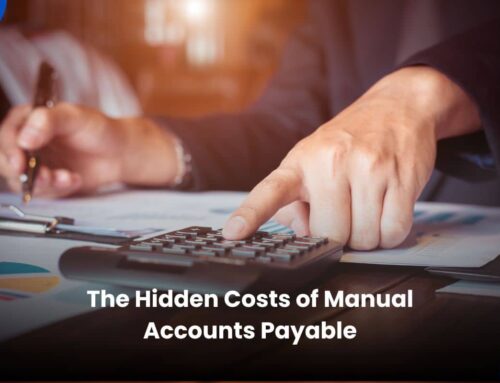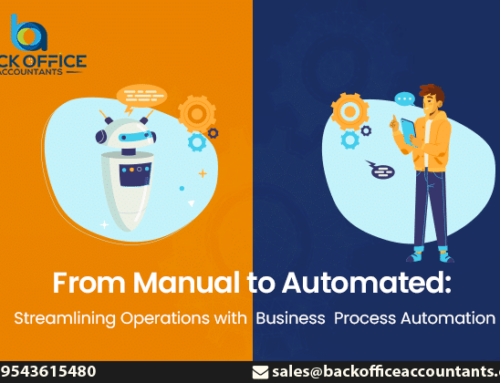Usage of Key Performance Indices and the set-up of relevant benchmarks are two key factors that go into the making of a productive, efficient and profitable Accounts Payable department. It is quite common for small and medium industries to forego the Accounts Payable KPIs, which is a huge mistake according to our Accounts Payable experts at Back Office Accountants.
Having an accounting department to get your AP done is not sufficient if you do not steer your AP workflow towards efficiency right direction – which is not possible without relevant KPIs. So in this blog here we are going to present you 5 key AP KPIs that can give you the right feedback on your AP process and help you strategize and steer your AP process in the right direction. Read on:
Days Payable Outstanding: Also known as creditor days or Accounts Payable Days, Days payable outstanding is simply the average number of days a business takes to pay off its creditors. It is a simple and key metric in Accounts Payable that can give insight into the overall cash cycle, efficiency and productivity of your AP process.
For example, if the DPO is 35, your business takes 35 days on average to pay the suppliers. Whether the number is high or low, depends on your industry – both high DPO and low DPO has their pros and cons.
- Lower DPO can help you bag better payment terms, early payment discounts but a company might be leaving out an opportunity to make better use of funds available if the DPO is lower than necessary.
- When a company has a high DPO then the industry average can give a company the necessary space and funds to clear short term debts. However high DPO may reflect the company’s difficulties in maintaining cash conversion cycle failing to bag early payment discounts and favourable supplier terms. Maintaining the right DPO is advised for better AP performance.
Cash Discount Realization Rate: Are you bagging the cash discounts offered by your suppliers and vendors – CDR metric is here to quantify your performance in this regard. And you will be surprised how often business misses out on the discounts owing to multiple factors like longer invoice processing times, higher CDRs and more.
Given how diligently your team has negotiated the payment terms and early discount rates, it is only obvious to get behind these discounts to improve your profit margins.
Duplicate Payment Rate: The most common financial discrepancies suffered by the AP departments of small and medium businesses are duplicate payments. Multiple records, bad data and data entry mistakes or even fraud are common causes of duplicate payments and they must be accounted for.
Businesses with streamlined and automated AP process flows often report lower DPRs. The industry average for duplicate payment rates often ranges from 0.4 to 0.7%, the highest being 1.5% – which however doesn’t point to the loss of the business. Nonetheless DPR is a handy metric to have in your AP process.
Average Cost per Invoice: Basic which is why a key metric of invoice processing in Accounts Payable, Average cost per Invoice gives a basic cost incurred for processing an invoice.
In general, Cost per Invoice processed = Total AP costs / Total number of invoices
It is the first metric that gives the first glimpse of the total efficiency of the Accounts Payable department – but please mind that the metric can be difficult to calculate due to a sheer number of resources involved in processing an invoice and differences in the type of invoices.
At Back Office Accountants since we offer Accounts Payable Services to different types of business across a variety of verticals, we come across different types of invoices with timeline and lifecycle of their own. But as we rely on the Automated Accounts Payable process, it is quite easy for us to zero down the metric for our clients – which may not be possible for business with manual Accounts Payable processes.
However, Cost per invoice is a reliable metric that can gauge Accounts Payable performance and helps you compare your efficiency of your process with industry benchmarks.
Invoice Processing Time: There is no point in only tracking the cost incurred but not the time taken to process invoices, given time is money in AP. This makes Invoice processing time a basic metric along with Cost per invoice in gauging your AP department’s performance.
As for the metric invoice processing time is the time taken to process a single invoice – which usually varies based on the organization type and size. Our Accounts Payable experts at Back Office Accountants can take around 3-4 days with our streamlined AP system – which is blazing fast when compared to 17 days IPT taken by regular AP departments.
Having IPT more than the average industry value indicates that your AP team is stuck in manual tasks, lax invoice approval cycles, unorganized AP process flows and other problems. One simple way to reduce these perpetual AP bottlenecks is to seek the expertise of Accounts Payable experts at Back Office Accountants. In case you are only starting, you can simply outsource Accounts Payable Services to our experts at Back Office Accountants for better AP performance at reduces cost and zero-risks. You can contact us here: https://www.backofficeaccountants.com/







